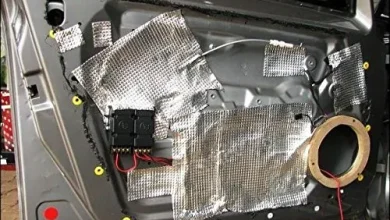Essential Tips for Troubleshooting Winter Car Problems

Your car may face a number of difficulties in the winter, such as frozen locks, slick tires, and dead batteries. For safe and hassle-free driving in the winter, it is imperative to understand how to troubleshoot these typical car issues. Simple actions like using the appropriate engine oil, monitoring your battery, and keeping your tires inflated can have a significant impact.
Your automobile will also remain in excellent condition if you take preventive steps like elevating the wipers, applying de-icer sprays, and changing to winter tires. If you’re ready, you’ll be able to handle the harshest winter weather with ease and confidence.
1. Winter Car Care Tips
Check Your Battery
Regular checkups are crucial during the winter months since cold weather can put additional strain on your car’s battery. Testing the battery’s voltage with a multimeter is an excellent place to start because a properly charged battery should read about 12.6 volts. Check for corrosion on the terminals and use a battery terminal cleaner or a solution of baking soda and water to clean them. To ensure appropriate power flow, make sure all connections are tight.
Inspect Tire Pressure and Tread
For safe winter driving, proper tire care is essential. Tire pressure decreases in cold weather, which can impair traction and fuel economy. Make sure your tire pressure satisfies the manufacturer’s specified PSI by checking it frequently with a trustworthy tire pressure gauge.
Make Use of Proper Engine Oil
Engine oil can thicken in the winter, making starting your automobile more difficult. For improved flow in cold weather, use a low-viscosity oil, like 5W-30, or as directed by your car’s manual. For the best engine performance, always check the oil level and top it off if necessary.
Keep Your windshield safe
Place a windshield cover on overnight to avoid ice and frost accumulation. To prevent your wipers from freezing on the window, raise them. For clear vision on icy mornings, use an ice scraper and winter-grade washer fluid.

2. Driving in Winter Weather
Winter driving calls for extra vigilance because of icy roads, poor visibility, and erratic weather. To enable longer stopping times, start by slowing down and keeping a wider following distance. Steer clear of abrupt actions that could cause your automobile to skid, such as harsh brakes or rapid bends.
In low-visibility situations, such as fog, snow, or intense rain, always use your headlights to make sure other drivers can see you. Before you get on the road, make sure your windshield and mirrors are free of snow and frost.
Keep to major routes that are more likely to be salted and plowed while planning your journey. If you come over black ice, maintain your composure, steer gently in the desired direction, and refrain from braking. Take your time and put safety first because winter driving requires patience and preparedness.
3. What to Do in an Emergency
Stay up to speed on any updates or alerts, especially during natural catastrophes, to protect both yourself and other people. Effectively managing a crisis can also be greatly impacted by having an emergency plan and supplies on hand.
- Don’t push yourself too much and stay in your automobile.
- Make your vehicle visible. Keep the inside dome light on and place bright marks on the windows or antenna.
- Keep carbon monoxide poisoning in mind. Run your car sparingly, just long enough to get warm, and make sure there is no snow blocking your exhaust pipe. Avoid operating your vehicle in an enclosed area or with the windows up for extended periods of time.
conclusion
In conclusion, to guarantee that your automobile operates securely and effectively during the winter, diagnosing winter auto issues calls for a proactive strategy. Common winter problems can be avoided with routine maintenance, such as checking the tires, fluids, and battery. Additionally, it’s critical to have emergency supplies on hand, such as first aid kits, blankets, and jumper cables.
No matter how severe the weather becomes, you can reduce the likelihood of winter auto problems and maintain the smooth operation of your automobile by being aware and taking precautionary action.
1. What is the most reliable car for winter?
Cars with four-wheel drive (4WD) or all-wheel drive (AWD) and good traction control systems are usually the most dependable for the winter. The Subaru Outback, Toyota 4Runner, and Honda CR-V are well-known models that are renowned for their dependability in the winter months. These cars provide greater handling on slippery or snowy roads, more stability, and increased safety in inclement winter weather.
2. Which automotive issues are more prevalent in the winter?
Dead batteries, flat tires, frozen fuel lines, poor grip on snowy roads, and heating system problems are among the most frequent wintertime auto troubles. Additionally, frozen windshield wipers and thicker engine oil might result from cold conditions. Performing regular maintenance can help prevent these issues.
3. Can you drive in the cold with just third-party auto insurance?
Since third-party auto insurance only covers damage to other cars or property in the event of an accident, it might not be sufficient for winter driving. It excludes coverage for damage to your own car, which is crucial during the winter months when things like snowstorms and slick roads can cause collisions. For improved protection when driving in the winter, comprehensive or completely comprehensive insurance is advised.
4. What winter car maintenance should I do before the season starts?
Make sure your automobile is prepared for winter by checking the tires, battery, and antifreeze levels. Make sure your heating system is operating, change out worn-out wiper blades, and fill up windshield washer fluid. Additionally, it’s a good idea to check that your brakes and lights are in good working order for winter driving and change the oil if necessary.



